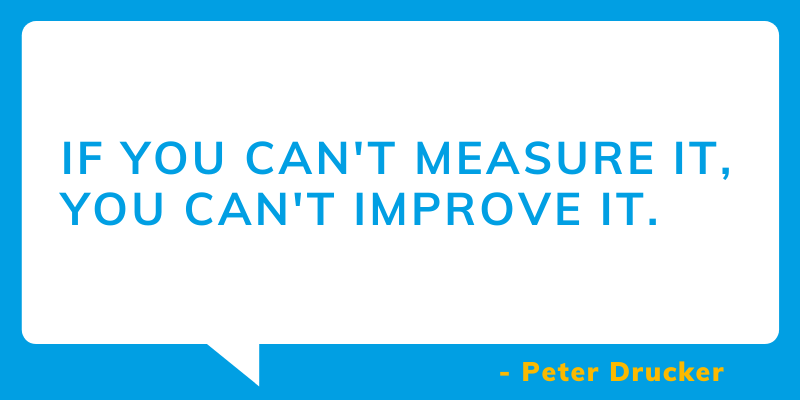Menu
Deciding what marketing to do comes from knowing what works. That’s why it’s handy to know how to measure marketing performance.
I get it. Completing a performance review seems like another task to add to your enormous list of higher priorities. So let me be frank. If you aren’t reviewing what you’ve done, chances are you are wasting time, money and opportunities. I couldn’t say it any clearer than Peter Drucker.

I’ve broken down the simple steps you can take to measure marketing performance and get more clarity on what you should do more and less of.
If you’ve already got a marketing plan that you work to then your list is already sorted. If not, don’t worry.
Simply write down all the marketing you did in the last year (or even better create an Excel worksheet – I love a good table). This could include things like Google Ads, magazine ads, trade shows, giveaways, social media activity, email marketing… You get the idea.
Don’t forget to add marketing you did that was free. For example, if you create posts for Facebook yourself this is still a relevant marketing activity that should be evaluated because time is money.
Pop this in a column – titled objective – next to the marketing initiative. What if you didn’t have an objective? No problem.
Ask yourself now – “what did I want to happen as a result of doing this activity?” This is the outcome you expected. Add this in the objective column.
Want help creating marketing objectives? Read this post on how to write marketing objectives and get your hands on my free marketing objectives worksheet.
Did the activity help you achieve the objective you outlined?
There are many ways to measure marketing performance, and there are different metrics depending on the activity. So how do you know what to track?
Look at your objective again and ask yourself – “what information or data shows me that the outcome was achieved?” That’s the data you need to measure if the activity worked. Let’s use an example to illustrate.
I’ve sent an email campaign to my subscribers to get them to visit my website to find out about a new service (in marketing speak, I wanted to increase awareness). What results would I look at?
I would want to know:
There are so many great tools out there to help you measure marketing effectiveness such as google analytics, google ad reports, email marketing reports, social media insights or even a promotional code on a newspaper ad that customers must quote to get a special offer. Check out my article on important website metrics to track in google analytics.
Now you need to add a column with the costs for the marketing activity you completed. This would include all the costs you incurred to create the marketing. It might include things like graphic design, printing, advertising spend, photography or email marketing subscription costs.
For the purposes of this article, I’m going to keep return on investment (ROI) simple. The easiest calculation you can use is this one:

You might not know how much incremental revenue you generated so an estimate will do. The goal here is to get you in the habit of thinking about how marketing delivers for your business.
Using my example, if I had five clients take up my new service because of my email campaign, then my incremental revenue would be the total revenue I generated for the new service from those five people.
What if your marketing activities didn’t have a cost or the activity wasn’t designed to generate revenue directly? In this case it’s enough to analyse if the activity generated the result you wanted. Not everything can be measured simply so don’t get overwhelmed. Measure what you can, estimate what you can’t.
Look at the table you created and identify the activities that stick out as performing well or poorly. I find it helpful to mark activities as start, stop or continue. Add another column and mark activities as follows:
You’ve now completed a review of your marketing and know how to measure marketing performance. You’re in a great place to set some excellent marketing priorities.

© 2024 Marketing On Demand. All Rights Reserved. Marketing on Demand is a trading name and registered Trademark of Unlimited Talent Ltd | Privacy Policy | Terms and Conditions
By using this website you accept our privacy policy and website terms and conditions